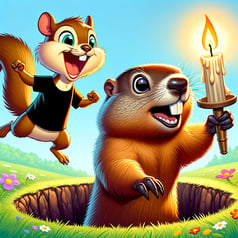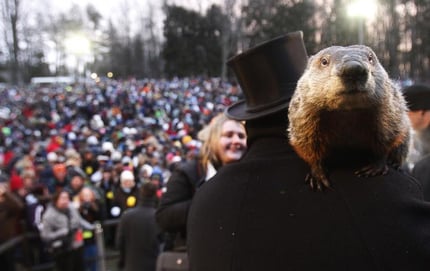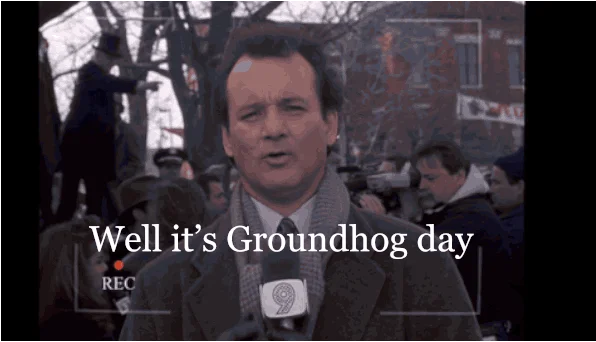Hey PA Virtual, although Punxsutawney Phil didn't see his shadow today, we can still make bets on when Spring will really arrive. For most of us Groundhog Day is the day we all start wondering when the warm weather will come rolling in. This day, thanks to the movie starring Bill Murray, has gained more and more popularity as time has gone on. Celebrated every February 2nd, this day is a blend of folklore, tradition, and a touch of whimsy. But there's more to this day than just a groundhog emerging from its burrow. Let's dig deeper into its origins, the science (or lack thereof), and why it captures our imagination.
📜 From Ancient Roots to American Tradition: A Rich History 📜
This tradition has evolved from ancient European customs and the Christian festival of Candlemas, which involved the blessing of candles to predict the length and severity of winter. German settlers in Pennsylvania, missing the European badgers used in their native tradition, turned to the groundhog as their new weather forecaster. This led to the first official Groundhog Day celebration in Punxsutawney, Pennsylvania, in 1887, establishing a unique American cultural event.
🔍 Groundhog Predictions: Science or Folklore? 🔍
 While it's fun to watch a groundhog like Punxsutawney Phil predict the weather, scientifically, it's not a reliable method. The tradition says that if the groundhog sees its shadow due to clear weather, it will retreat back into its burrow, indicating six more weeks of winter. Conversely, no shadow predicts an early spring. However, the accuracy of such predictions is around 50%, which is as good as flipping a coin. The real arrival of spring is determined by the Earth's axial tilt and its orbit around the sun.
While it's fun to watch a groundhog like Punxsutawney Phil predict the weather, scientifically, it's not a reliable method. The tradition says that if the groundhog sees its shadow due to clear weather, it will retreat back into its burrow, indicating six more weeks of winter. Conversely, no shadow predicts an early spring. However, the accuracy of such predictions is around 50%, which is as good as flipping a coin. The real arrival of spring is determined by the Earth's axial tilt and its orbit around the sun.
🌱 Nature's Signals: Understanding Seasonal Changes 🌱

In nature, animals, like groundhogs, are pretty smart about noticing changes around them. They can tell when the days are getting longer or when it's getting warmer or colder. These changes help them decide when to find food, sleep more, or get ready for different seasons. Groundhogs, for example, aren't really telling us the weather on Groundhog Day. But the way they act – like coming out of their burrows or staying in – gives us a peek into how animals adapt to the world changing around them. It's like they have their own natural calendar!
🎭 Celebrating Groundhog Day: A Cultural Phenomenon 🎭
Groundhog Day has grown into a significant cultural event, especially in towns like Punxsutawney, where thousands gather to watch the groundhog's prediction. This event has sparked similar celebrations across North America, with various towns boasting their own weather-predicting groundhogs. The day is filled with festivities, community spirit, and even references in popular culture, like the comedy film "Groundhog Day" starring Bill Murray, where he relives the same day over and over – much like a long winter!
A Day of Joy and Anticipation
Groundhog Day is more than just a fun tradition; it's a special day that mixes a bit of history, some facts about our resident groundhog, and a little bit of guessing about the weather. It's a time where we can reflect on nature and the instincts that bring it all together. Plus, it's a day where communities come together, have fun, and maybe even watch a famous groundhog on TV! Whether the groundhog sees its shadow or not, Groundhog Day is a great reason to think about nature and look forward to the sunshine and flowers of spring.




Comments